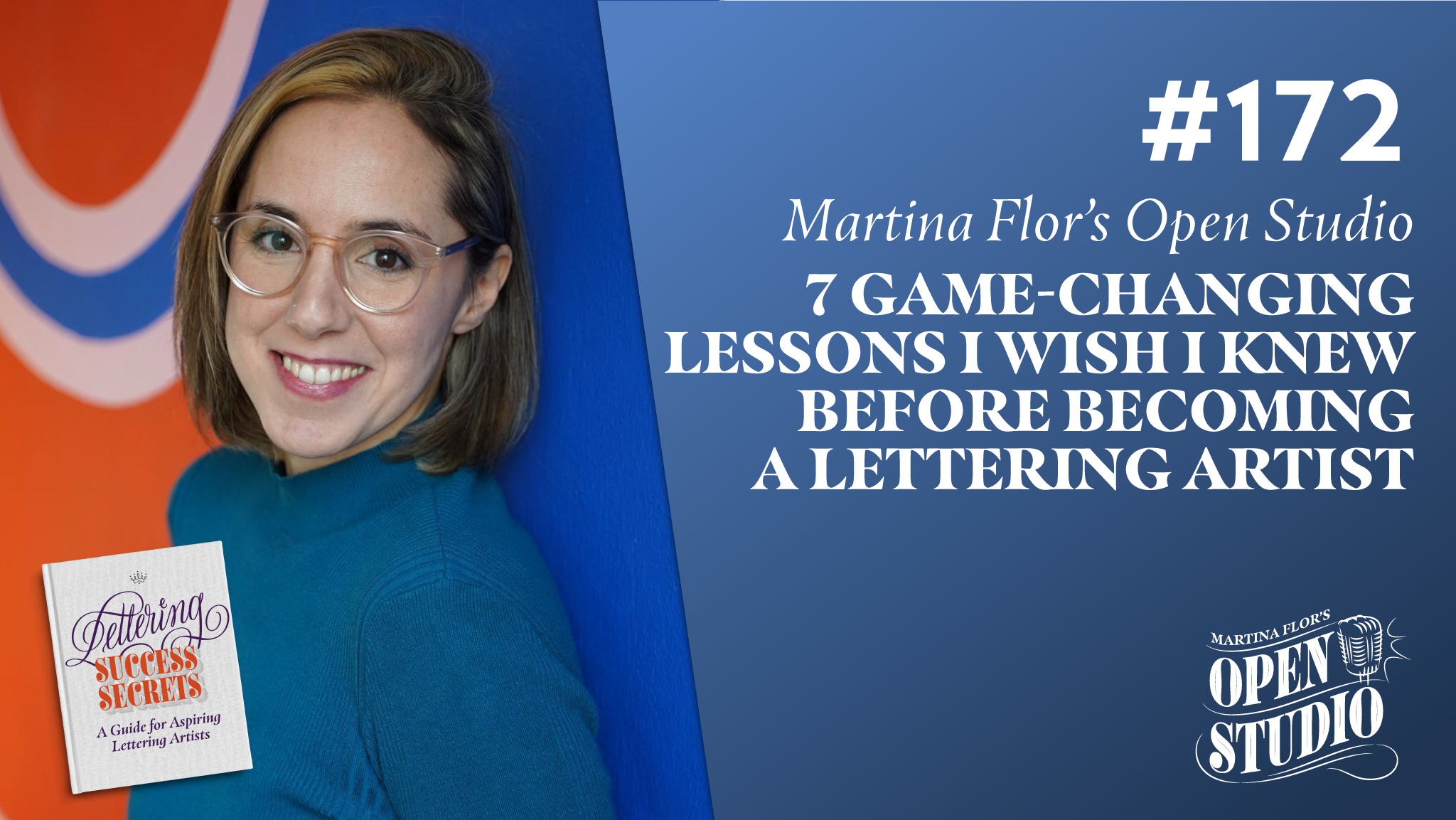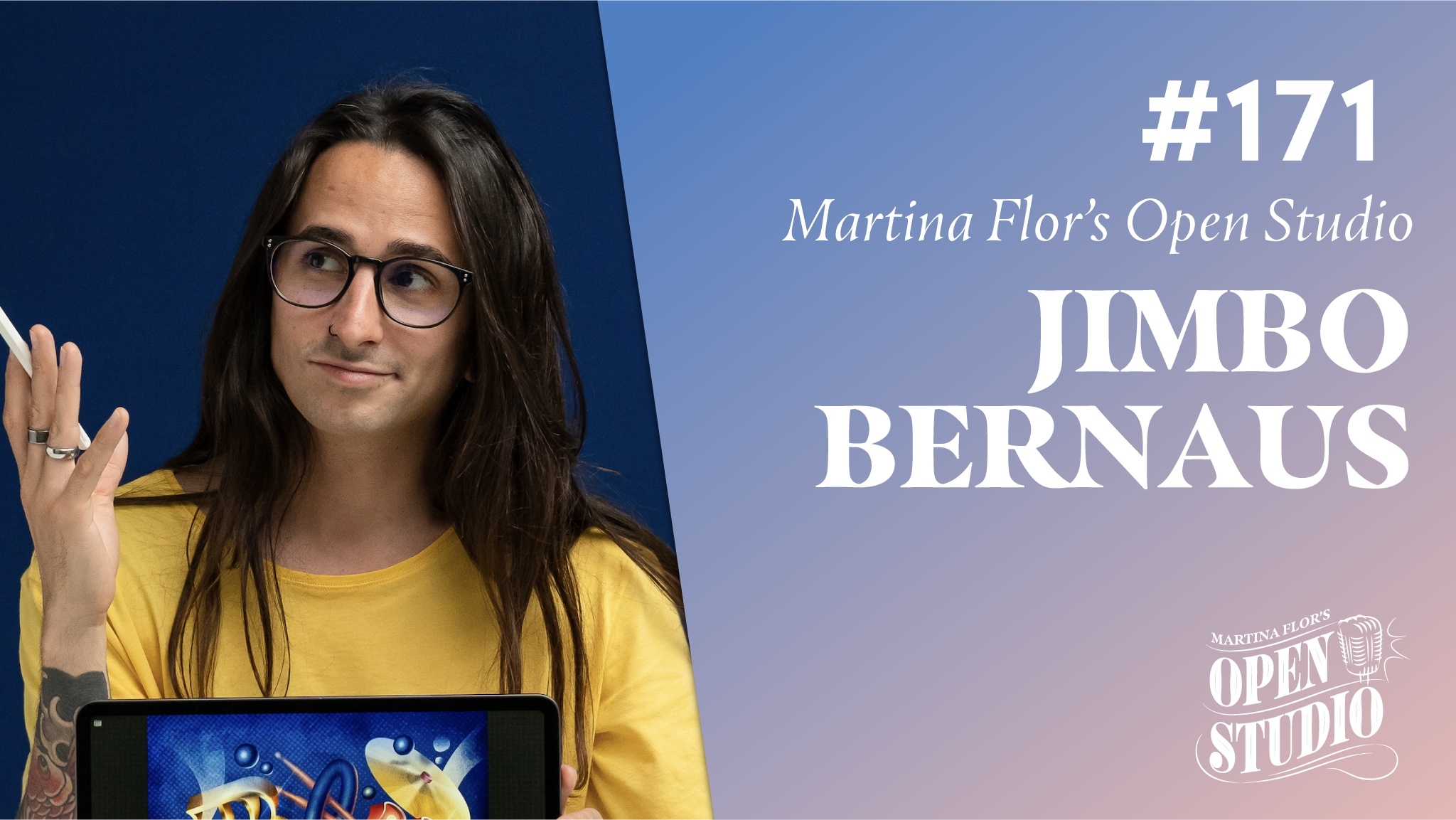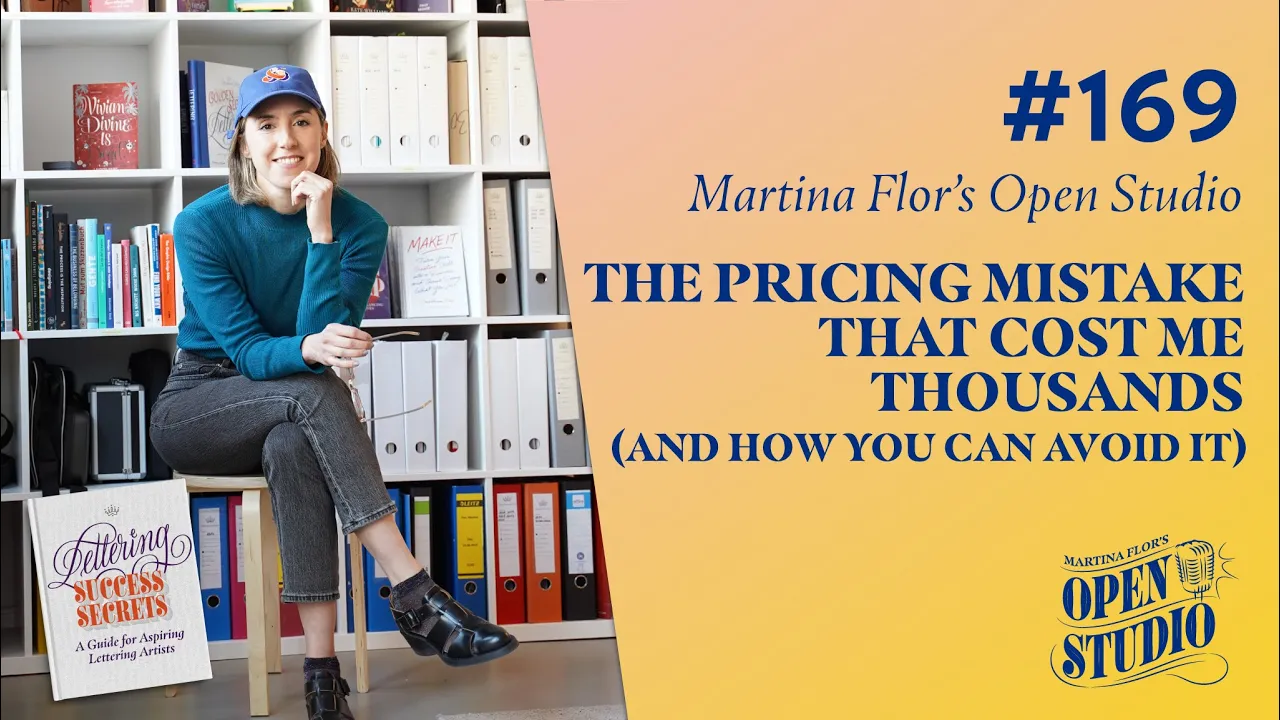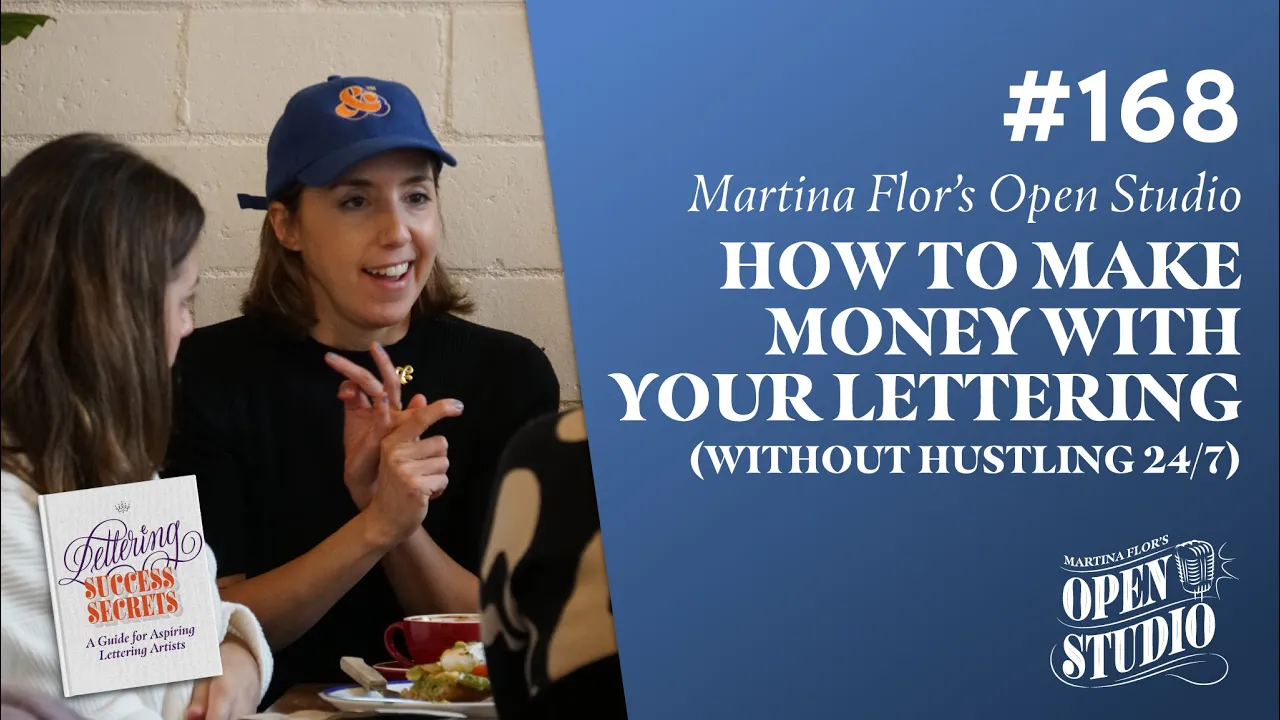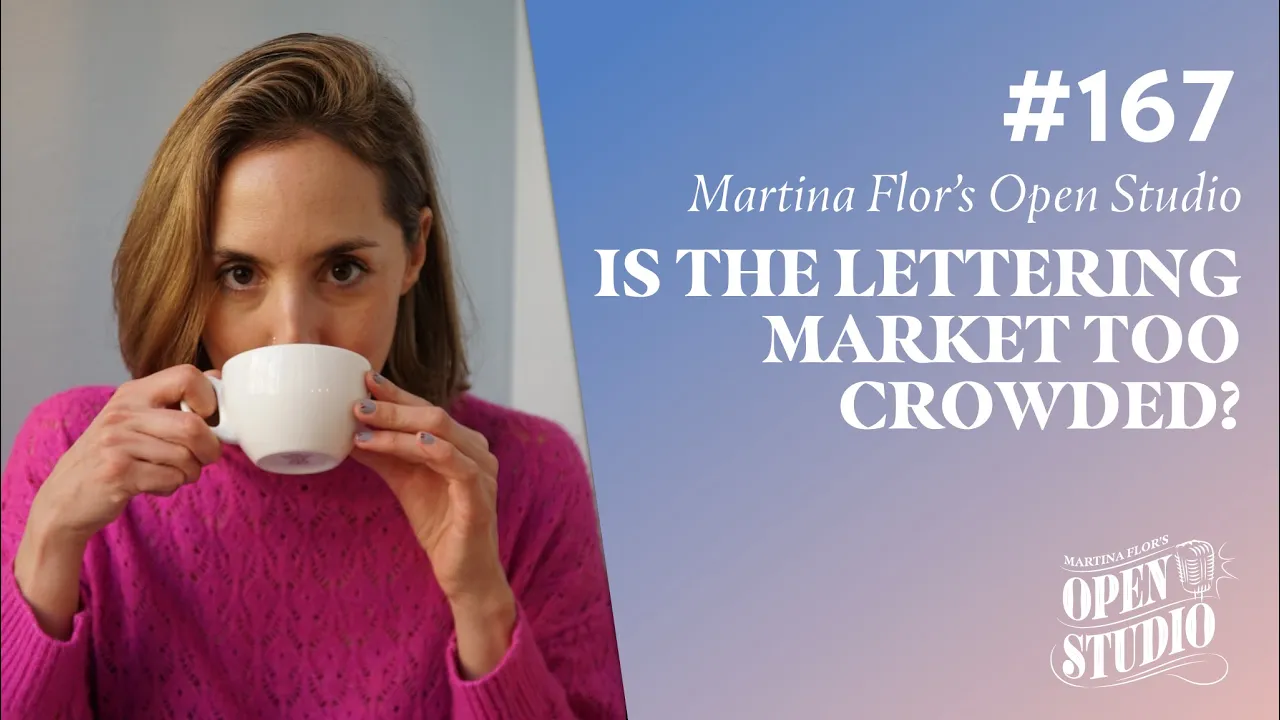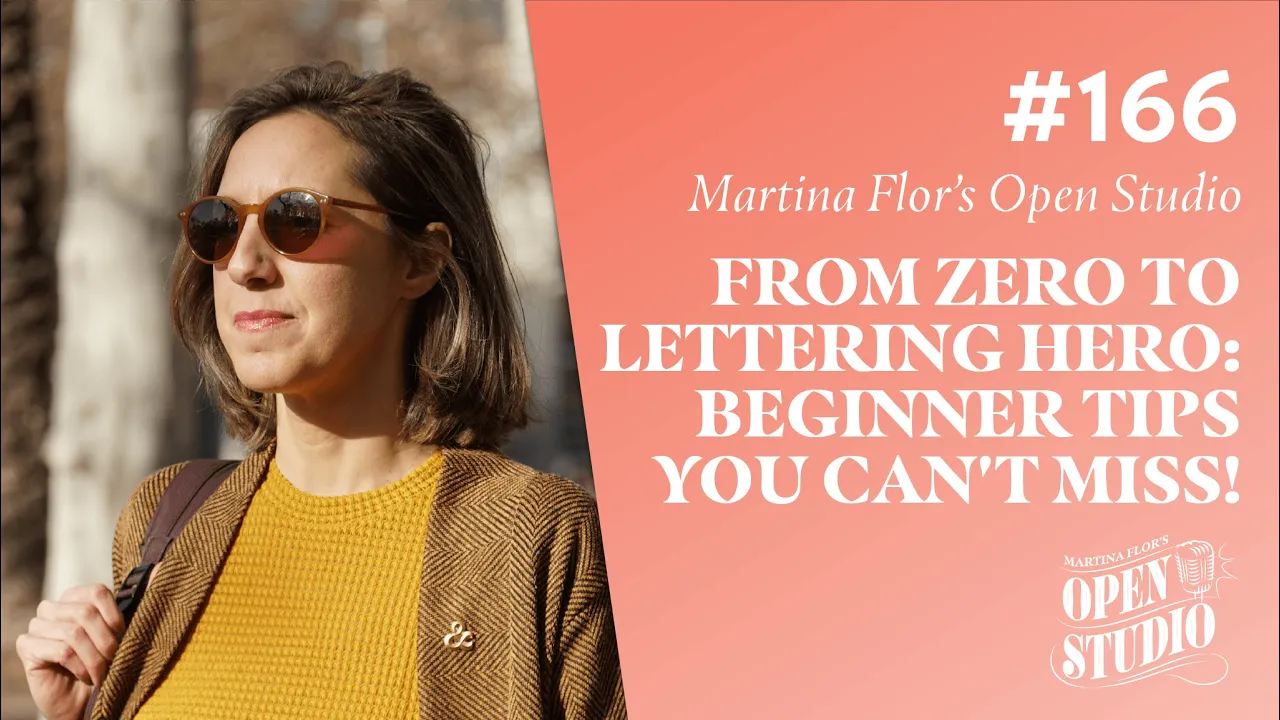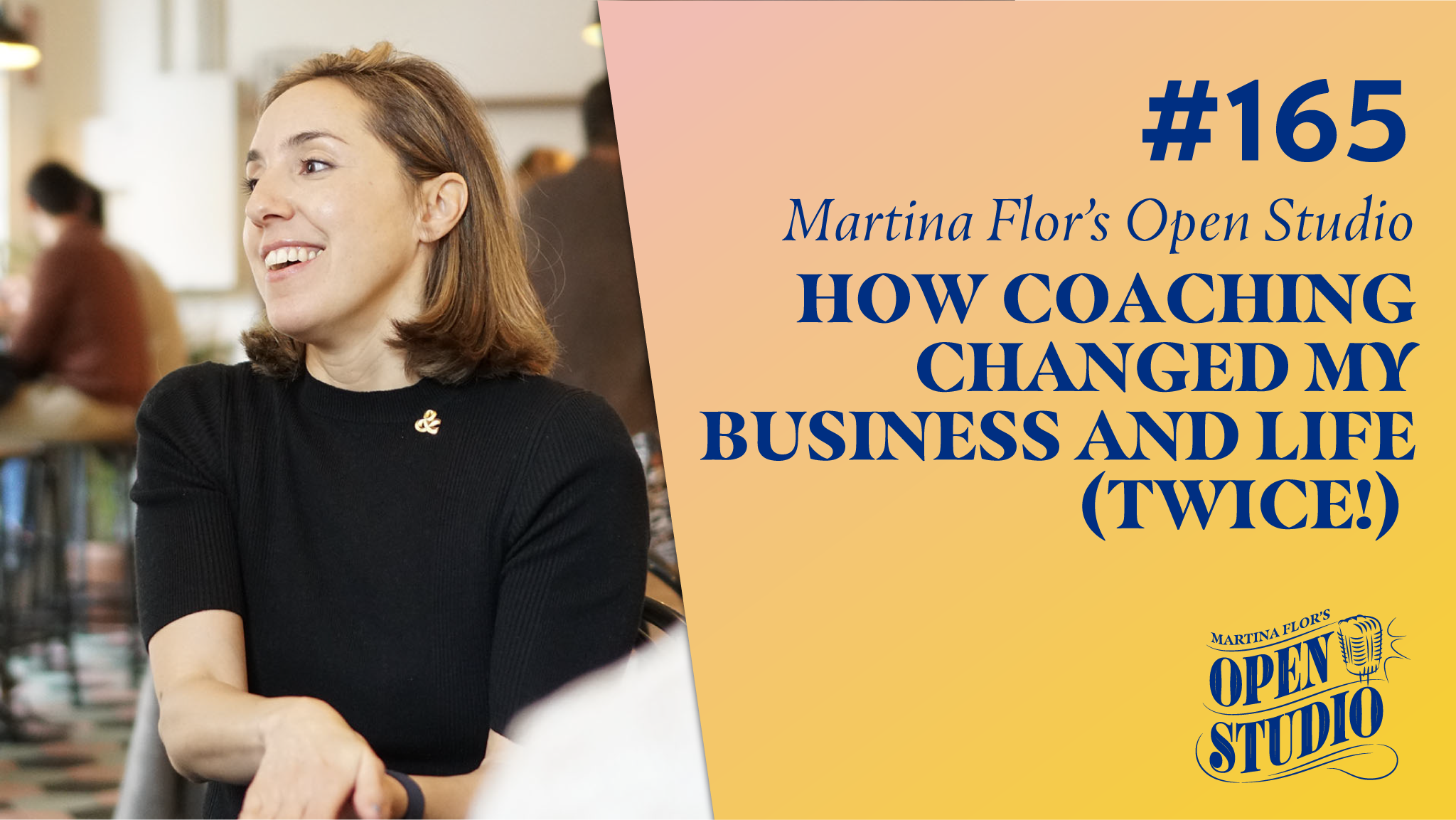How I Kicked-off My Lettering Career with Two Simple Tactics (And How You Can Too!)
Are you struggling to make time for your creative work while juggling a job that doesn’t inspire you? If you're feeling stuck and unsure of how to transition into a career you love, this episode of Open Studio Podcast is for you.
I'm Martina Flor, lettering artist and creative entrepreneur, and today I'm sharing the two simple but powerful tactics that helped me kick off my lettering career—starting from scratch while working a full-time job. These small shifts not only helped me build a consistent creative practice, but they also became the foundation of the career I have today.
How My Lettering Career Started
Before becoming a full-time lettering artist, I was working as a graphic designer and creative director. On paper, I had a great job with a good salary—but I was miserable. My days were filled with emails and meetings, far from the creative life I had imagined for myself.
Despite loving lettering and illustration, I believed I couldn't make money from my passion. I kept pushing my creative projects to the side while focusing on paying the bills.
But then something clicked—I realized that if I wanted my life to look different, I had to start making different decisions.
I made two simple but game-changing shifts that set everything in motion—and today, I'm sharing them with you.
Tactic #1: Early Morning Magic
Prioritize Your Creative Work First Thing in the Day
One of the biggest mistakes I made early on was saving my creative work for the end of the day. After long hours at my job, I would come home drained, with little energy left to pursue my passion.
Everything changed when I flipped the script.
Instead of waiting until the end of the day, I started waking up earlier and dedicating the first part of my day to my lettering practice.
Even if it was just 15 minutes of focused work, I started the day with a small win—proving to myself that my creative skill mattered. This simple habit helped me build momentum and made me feel like I was making progress every single day.
How to Get Started with Early Morning Magic:
- Set your alarm 15–30 minutes earlier than usual
- Create a dedicated workspace
- Avoid checking social media or emails—go straight into your creative practice
- Start small—focus on one simple project each morning
Tactic #2: Every Project Counts
Finish What You Start
For years, I would create endless sketches without ever finishing anything. My work would sit in a drawer, never seeing the light of day.
But once I committed to treating every piece like a real project, everything changed.
I made a promise to myself: No more unfinished work. Every lettering piece—whether a simple sketch or a passion project—had to be finished and added to my portfolio.
Finishing projects builds confidence, helps you improve faster, and creates the body of work that will eventually attract clients.
How to Commit to Finishing Projects:
- Set a clear goal for each piece
- Give yourself a tight deadline (1–2 weeks maximum)
- Treat each project as if it were a real client assignment
- Share your finished work online—even if you're still a beginner
Why These Tactics Work
These two simple tactics helped me shift from dreaming about a creative career to actually building one.
By prioritizing my creative work and consistently finishing what I started, I built momentum, confidence, and a portfolio—all without quitting my day job.
If you're feeling stuck right now, I want to encourage you to start small. You don't need to quit your job or have a perfect plan. Just carve out a little time each day and commit to finishing one project at a time.
Bonus Resource:
Download Your Free Diary for Aspiring Lettering Artists
To help you document your creative journey, I've created the Diary for Aspiring Lettering Artists—a guided journal packed with prompts, insights, and stories from my own career.
👉 Download your FREE copy here: martinaflor.com/diary
Final Thoughts
If you're waiting for the perfect time to pursue your creative dreams—this is your sign to start now.
Wake up 15 minutes earlier. Finish your next project. Start building the creative life you've always dreamed of—one small step at a time.
Remember, every small win counts—and before you know it, you'll have a portfolio full of work and the confidence to launch your creative career.
Subscribe to Open Studio:
Stay up to date with the latest tips and strategies to grow your creative business by subscribing to Open Studio on your favorite podcast platform.
To access the full show notes for this episode, click here: https://martinaflor.com/podcast


